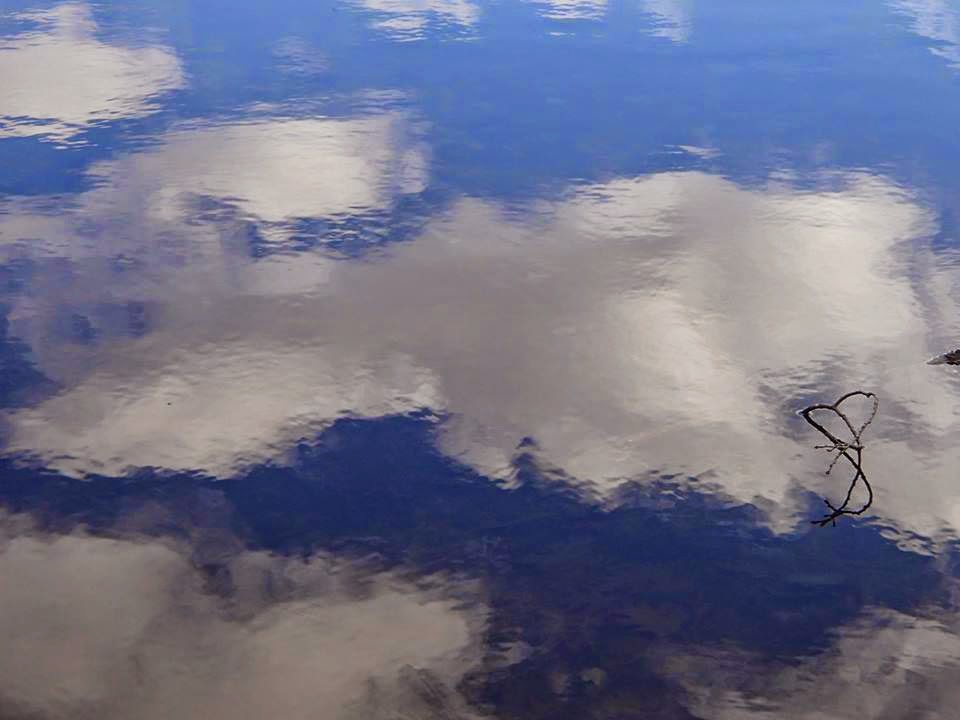People
have diverse reactions to Halloween. For many children, it's a
magical time to dress up and go visiting, collecting bags of candy.
For some adults, it is fun, but creepy and weird. For
some adherents to Christian religious sects, it is a clandestine
foothold of Satan in the world. But for those of us who
self-identify as pagans, it is the highest of holy days.
There
is a common error committed by some religious zealots: the
conflation of paganism with "Satanism." Paganism has
nothing to do with Satanism. Satan is a Christian deity, the
repository of the shadow elements of the Christian soul, rejected
outright from the collective consciousness, and thereby given great
power over the collective unconscious. This is the meaning of the
banishment of Satan from Heaven, and his eternal reign in Hell. But
paganism enacts no such polarity, preferring to integrate the shadow
powers of the unconscious with the compassionate and loving
collective consciousness, preserving a harmony that reflects the
balance of nature.
It
must also be acknowledged that to be a pagan has no definitive
meaning. Generally, the term refers to those religious beliefs
and practices that were common in Celtic Europe before the arrival of
Christianity. But there is no universally recognized set of
organizations, no orthodox scripture, no dogma. Therein lies a
weakness of paganism as a belief system, but also a very great
strength. What it means to be pagan is up to each individual to
decide, and one is a pagan simply by believing oneself to be so. Our
priesthood is the animals and trees, our scripture is the leaves and
the stars, and our church is the stones and seas of the earth.
Therefore what I have to say today about paganism is only that:
what I have to say today about paganism.
The Holy Days of the pagan
calendar include the equinoxes and solstices, but emphasize the
cross-quarter days: those that fall exactly between the solstices
and equinoxes. These are Imbolc (Winter-Spring), Beltane
(Spring-Summer), Lughnassad (Summer-Autumn) and Samhuin
(Autumn-Winter). Of these, Beltane and Samhuin are highest, and
Samhuin occupies a special place because it is considered the
beginning of the new year. The astronomical date of Samhuin is
November 6 on a modern calendar, but the precession of equinoxes has
caused the calendrical date to drift by a week, and we celebrate it
now on October 30.
Samhuin is a Celtic
spelling and pronunciation (sah-ween), whose somewhat more familiar
Anglo-Saxon counterpart is Samhain. I believe it is from the Celtic
phonetics of this word that we derive our modern “halloween.”
It seems a more likely derivation than the traditional “all
hallowd's eve,” since, under that theory, one would have to explain
why we don't call the holiday “halloweve.”
The pagan religion, and
Celtic spirituality in general, places a high value on liminal space,
the “in-between” of things. Doorways, windows, and well openings
are liminal in space, but there are also liminal times, such as
midnight, dawn, and dusk. The cross-quarters are all liminal times
because they represent the conjunction of seasons, and Samhuin is
doubly liminal, since it is also the conjunction of the new and old
year.
Pagan religion, like most
tribal religions, believes in the transmigration of souls. At the
liminal moment of Samhuin, this transmigratory pathway is at its most
open, and we have a chance to see the movement of souls among the
worlds between the living and the dead, between the temporal
materiality and the eternal spirit. For this reason, we may see
spirit-forms walking the earth.
We honor the
transdimensional nature of spirit with our costumery, enacting its
transformations. We honor the wicce, the wise women of herb and
animal lore, and also the druids, the Der-Wydd, the Oak-seers who
seek the tree-lore contained in the cauldron of Cerridwen, nestled in
the roots of the world-tree, Ygdrasil. We honor the spiders, who are
the living image of the Weavers of Fate, the Sisters of Wyrd, whose
names are Urd, Skuld, and Verdandi, and who eternally weave the
fabric of destiny. We honor the moon, whose cycles resonate with the
cycles of our bodies, and our animal companions, among whom cats,
bats, and owls are particularly revered.
The symbols and meaning of
Samhuin have been systematically trivialized and denigrated by the
orders of the Catholic Church as part of its program of cultural
genocide against pagans that began with Saints Patrick and Columba in
the 5th century (we are the “snakes” whom Patrick
famously drove out of Ireland), reached its peak of atrocity under
the Spanish Inquisition, came on the ships to the New World and
showed its head in Salem, and is visible today in the ignorant
remarks of contemporary religious and political leaders. It is only
one genocide among many that hang from the head of that bloody
church, whose Jesus has said, “You shall know the tree by the fruit
it bears.”
Although they have
nonsensically related the pagan holy day to their own trickster
shadow-deity, have demonized our wise women as “witches” (whose
wisdom was a great threat to the invasive patriarchy), and have
slandered our familiar animal spirits with the curse of bad luck and
demonism, the pagan connection to its highest holy day survives. The
spirits of children and adults are captivated by our ancestral
connection to our own tribal religion. We celebrate the
transformation of our spirits, the communion with the departed, and
the special connections we have to the natural and animal worlds at a
time when the season sweeps us into the mystic perseverance of the
past, encoded in our very DNA. Enjoy, then this magical season, and
seek its ever deeper meaning, and be not fooled by appearances –
for they are transitory.
